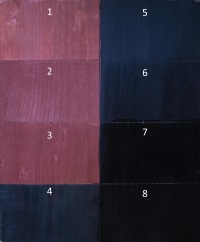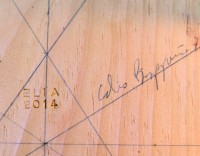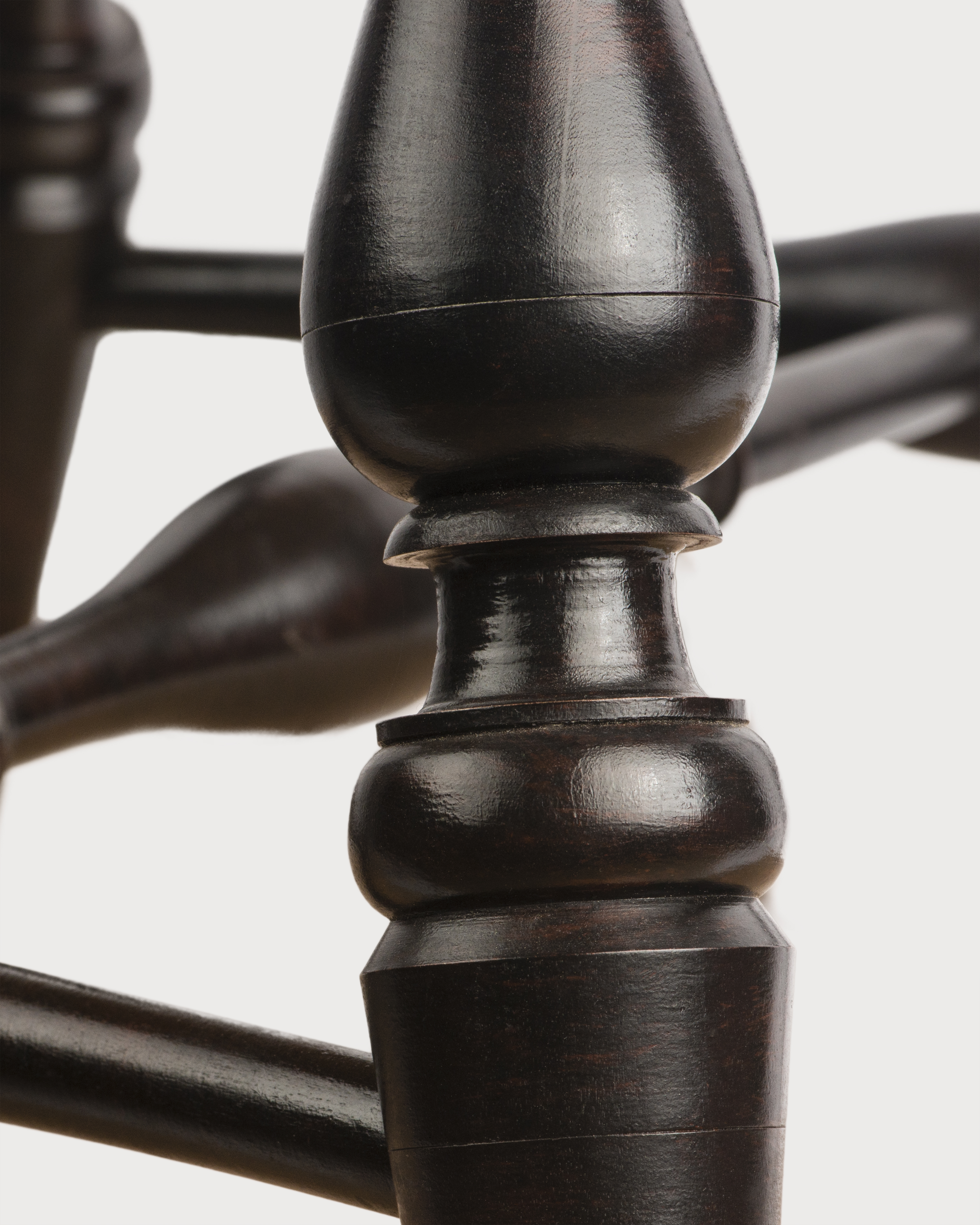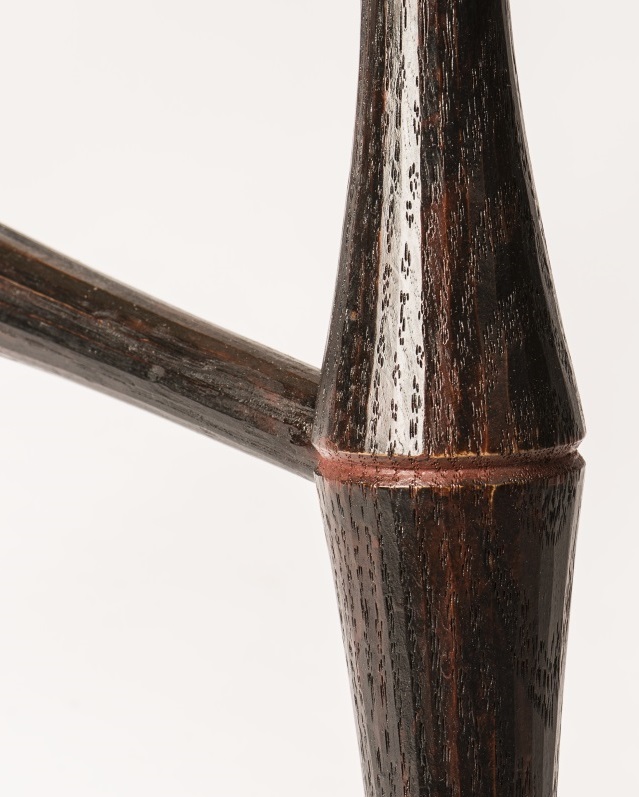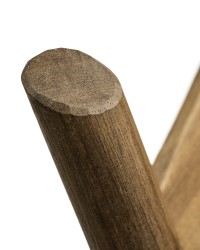WOODS
Traditional Windsor Chairs
Typically made from three specific woods, the woods in a traditional Windsor chair are selected for their necessary functional qualities, rather than for looks alone.
Seat: One-piece white pine boards, sawn from huge logs over 30″ inches in diameter, are my choice for seats. When painted with milk paint the growth rings in white pine raise. These subtle elliptical lines telegraph through the paint, adding visual interest to the seat’s surface.
Legs: Sugar maple, one of the strongest North American hardwoods, is ideal for traditional chair legs. Virtually imporous, it holds the crisp details of baluster turnings without crumbling. Red oak has huge pores, which add visual interest to double-bobbin turnings on more modern chairs.
Back Spindles and Bow: Oak is strong and flexible, it splits predictably and bends well — it is perfect for chair backs.
Contempory-style chairs have a wide range of wood choices:
Walnut: The finest of the North American hardwoods, walnut makes gorgeous chairs.
Walnut and Hickory: White hickory sapwood contrasts nicely with the dark walnut heartwood.
White Oak and Butternut: Both these woods can be fumed with ammonia, a process used on Mission-style furniture to give the style it’s distinctive dark finish.
Cherry, Butternut and Red Oak: These three woods can be used for the turnings, seats and backs on unpainted traditional Windsor chairs.
FINISHES
Paint:
Most 18th and early 19th-century chairs were painted. Today painting a handmade wooden chair may seem like a sacrilege to some, but at time when everyone had handmade wooden objects, painting them would have been common place.
Paint serves several purposes on traditional Windsors. It highlights the fancy turnings, crests and arms on traditional Windsors and visually unifies the form of the chair. Left unpainted, the grain of the wood distracts the eye from the form. Also, to make the lightest and most elegant chair possible, the woods need to be chosen for their intrinsic qualities, as mentioned above. These woods may not look good together, and paint again improves the appearance of the chair.
Milk Paint is a non-toxic finish made from milk protein, lime, clay, and earth pigments. It is extremely thin: every pore and growth-ring of the wood subtly shows through the paint. This is the paint I most often use on my chairs, followed by several coats of shellac. Though an ancient paint, milk paint was rarely used on old chairs, whose paint would often have been thick and the colors fairly bright.
My favorite milk paint is made by Old Fashioned Milk Paint Co., who have many beautiful colors to choose from.
Shellac:
On unpainted chairs, the purpose of the chair design shifts from showcasing fancy elements (turnings, scrolls, etc.) to showcasing fancy woods. Unpainted, the wooden surface of the chair is quite visually stimulating, so the form of the chair needs to be simpler than on painted chairs.
Shellac is a natural varnish made from resin secreted by female lac bugs on trees in India and Thailand. It is non toxic and gives both painted and unpainted chairs a beautiful sheen, as well as wear resistance.


